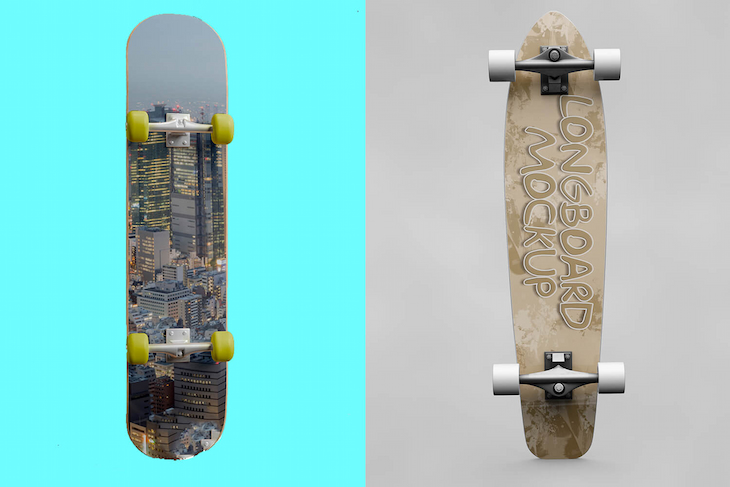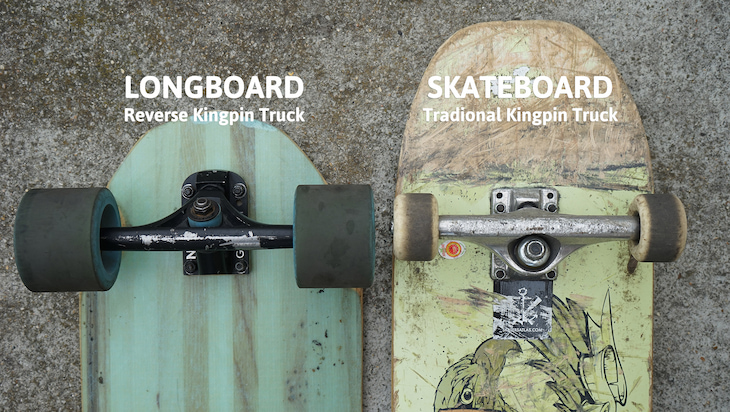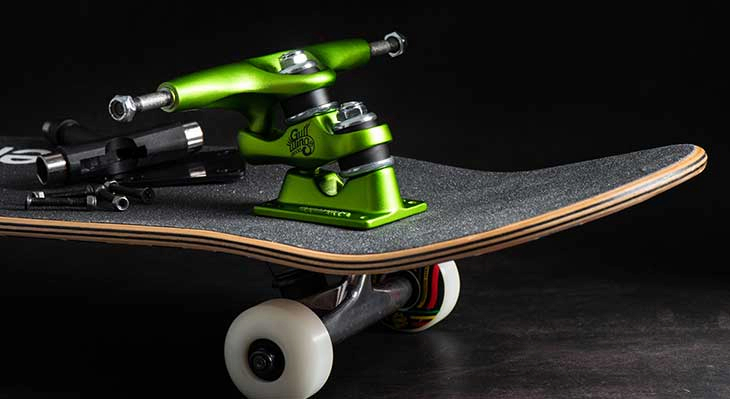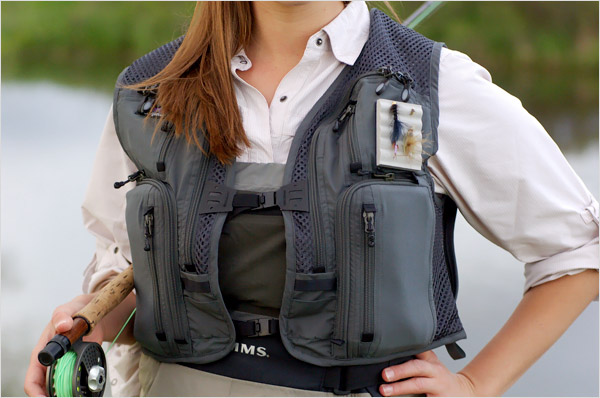There’s nothing quite as exhilarating and freeing as carving down the road on your skateboard or longboard. It’s more than just a regular hobby to get your mind off things and blow off some steam – it’s a full-blown lifestyle and dedicated art form.
But do you know what truly makes skateboarding and longboarding different? Many might assume that they’re just two variations of the same activity, but if that were the case, then they would have the same component parts. The trucks in particular are what separate these two activities from one another.
What’s the Difference Between Skateboard and Longboard Trucks?
Acting as the foundation of the ride and the connectors between the deck and wheels, this component part is what makes the two activities look and feel so different. Knowing what those subtle nuances are when you decide to buy skate trucks or longboard trucks could change the whole experience.

Hanger Size
The hanger is the part of the truck that’s shaped like a teardrop and attaches to the baseplate. One quick glance will tell you whether it’s suitable for the skateboard or longboard variety – the former has a much shorter surface than the other.
When you decide to buy skate trucks, you’ll notice the hangers are somewhere between 100 to 145mm, which is definitely shorter than the 150 to 180mm that you’d find in longboard models. The reason for this is the rapid, quick turns that you perform on the former, while longboarders tend to cruise at a much steadier pace.
Axle Width
The axle width is the distance between the inner side of the hanger and the axle bolts. This measurement helps to determine how stable or unstable your ride will be – with smaller axle widths providing a much tighter turning radius.
Skate trucks typically range from 19 to 20 cm wide, allowing for smoother spins and sharp turns. On the other hand, longboard trucks range from 30 to 35 cm wide, mainly as part of their design to provide a more stable ride and reduce the amount of wobbling. Since the tricks and terrains are vastly different between the two activities, this makes perfect sense.
Kingpin
The kingpin holds the hanger in place and also creates a pivot point for the trucks. It’s usually made from either nylon or metal, depending on the specific make and model. Nylon is generally designed to be softer, allowing for smoother turns and better control when navigating tight corners. Metal versions, on the other hand, provide a much more stable ride and can be used in areas where you need to absorb more force.

Skateboard trucks usually have a lower kingpin than longboard ones, as this allows them to move more freely and quickly. Additionally, the kingpin designs on skateboards also generally have a larger angle – allowing them to turn faster and sharper.
Bushings
The bushings are the rubber pieces that fit inside the hanger cup and help to absorb the shock when turning. They also act as a pivot point, giving you more control over your board and helping to maintain stability.
Skateboard bushings are generally softer than those of longboards, with more flexibility and range of motion. This is inherently designed to give skateboarders more control over their movements so they can make more precise manoeuvres. In contrast, longboard bushings are much harder and provide more stability to help navigate bigger areas more smoothly.
Baseplate
This is what attaches to the board and is held in place by a combination of the kingpin and hanger. Generally, longboard baseplates have an angle of between 48 to 50 degrees, while longboards have a lesser range of 40 to 45.
There’s not much difference between the materials used for both skateboard and longboard baseplates – it’s usually made from aluminium or carbon steel. The finishes, however, can vary greatly, with some having a coating to prevent rusting and corrosion. One example is powder coating, which helps to keep moisture out and allows for easier maintenance in the long-run.
Materials
The unit’s core is what’s responsible for the strength, durability and flexibility of the truck. Generally, it’s made from either aluminium or magnesium alloy – both of which are lightweight and strong enough to handle the wear and tear of skateboarding or longboarding.

Titanium is another material that’s often used in more expensive models, as it’s incredibly light and strong. Carbon fibre is also an option, although it’s not very common in skate trucks due to its high cost and slightly more rigid build.
For beginners, you should stick to regular aluminium or magnesium options. These aren’t only the most affordable, but they’re also more than adequate for basic tricks and manoeuvres. If you want to try more challenging tricks and require a bit more stability, then titanium or carbon fibre may be worth investing in.
Can You Use Skateboard Trucks on a Longboard?
Because of the obvious size and design differences between skateboard and longboard trucks, you can’t exactly use them interchangeably. They won’t fit properly and you won’t get the same performance from them. With that said, if you wanted to convert a longboard into a skateboard or vice versa, it is possible to do so, but there are specialised kits available for the different styles.



















